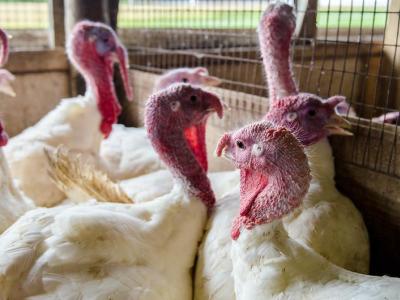Jun 21, 2007 TORONTO (CIDRAP News) Declining public interest in the deadly H5N1 strain of avian influenza and its pandemic potential has sparked alarm among animal-health experts, who worry that shifting priorities will derail the funding still needed to control the disease in birds.
Prominent veterinary scientists attending the International Conference on Options for the Control of Influenza, a meeting of about 1,500 flu experts this week in Toronto, urged their colleagues to remember that the virus will remain a human health threat as long as it circulates in birds and mammals.
Despite the apparent slowdown in human infections and deaths, H5N1 flu is continuing to evade detection and control efforts, recurring in birds in some areas that were thought clear, becoming permanently entrenched in others, and mutating in a way that renders long-used poultry vaccines less effective, according to conference presenters.
"Controlling avian influenza is an enormous challenge for the veterinary community," Dr. Ilaria Capua, head of virology at Italy's Istituto Zooprofilattico Sperimentale delle Venezie, said in a speech yesterday. "Local administrations in different parts of the world are not well prepared. The virus is changing as it moves to new ecosystems and hosts. We need money. We need resources."
Despite investments by international aid agencies, the animal-health system in Africa remains so poorly funded that "we have had several experiences of samples being stuck in countries for weeks when they should have been sent to reference laboratories," said Dr. Stella Chungong of the World Health Organization. "When you talk about capacity in Africa, you are really talking about very basic issues of specimen collection, transportation, and storage."
Bird outbreaks keep returning
In Southeast Asia, the area from which the virus began spreading in late 2003, there have been multiple H5N1 bird outbreaks just in the past month, along with Vietnam's first human death in two years, said Dr. Watanee Kalpravidh of the United Nations' Food and Agriculture Organization.
"Freedom from infection has not been sustained in the region," she said. "There has been a recurrence of cases in most of the affected countries, with some countries having continuing outbreaks. The virus may be endemic in some countries."
That is also true in Europe and the Russian Federation, where "the reemergence of the virus in a number of countries does suggest we are moving toward endemicity," even though some countries have deployed vaccinations against the disease, said Dr. Ian Brown of the British government's Veterinary Laboratory Agency.
Vaccinating poultry and ducks to contain avian flu has been controversial. It reduces birds' clinical symptoms, keeping them alive and preserving their economic valuethough not necessarily their utility as a trade good, because some countries refuse to import vaccinated chicken. It decreases viral shedding, slowing disease transmission, but it does not block infection entirely, potentially allowing the virus to spread silently.
And according to papers presented at the conference, vaccination may be driving the virus's evolution. Isolates gathered in northern Vietnam in December 2005 are not only more virulent than earlier samples, but less likely to be controlled by vaccines that once contained the virus successfully, said Dr. David Suarez of the Southeast Poultry Research Laboratory in Athens, Ga.
"There is certainly variability in the response to commercial vaccines," he said. "We are not getting very many new vaccines that are closely matched to the [wild] strains, and I think protection over time will suffer."
It is not clear what is driving the slippage, Dr. David Swayne, director of the Southeast Poultry Research Laboratory, said in a separate session: The influence could be immunologic pressure within vaccinated poultry or the birds' exposure to ducks that harbor other viral strains.
Threat to humans persists
Other presentations at the conference underlined avian flu's persistent but unpredictable threat to human health. A study of more than 900 people in four provinces of Thailand where there had been serious human cases of H5N1 flu found no mild or asymptomatic infections, according to Dr. Rapeepan Dejpichai of the Thai Ministry of Health, underlining a growing impression among some scientists that H5N1 is a difficult disease to catch.
But a study of a recent outbreak in Wales and England of H7N2 flua mild strain not thought to cause serious human diseaserevealed three people ill enough to be hospitalized and possibly 23 people who had contracted a flu-like illness, according to Dr. Jonathan Nguyen-Van-Tam of London's Public Health Services Laboratory.
Episodes such as those are of particular concern to scientists who worry that underfunded animal-health efforts could leave humans vulnerable to a resurgence of H5N1 or another novel strain.
"I've never understood why the medical community does not call for more support for the veterinary community, to say that if we could control flu in animals it would have a profound effect on controlling a possible pandemic," said Dr. Michael Perdue of the WHO's Global Influenza Programme. "But because it causes both animal infections and sporadic human infections, [avian flu] is not like any other disease. It has competing mandates."


















